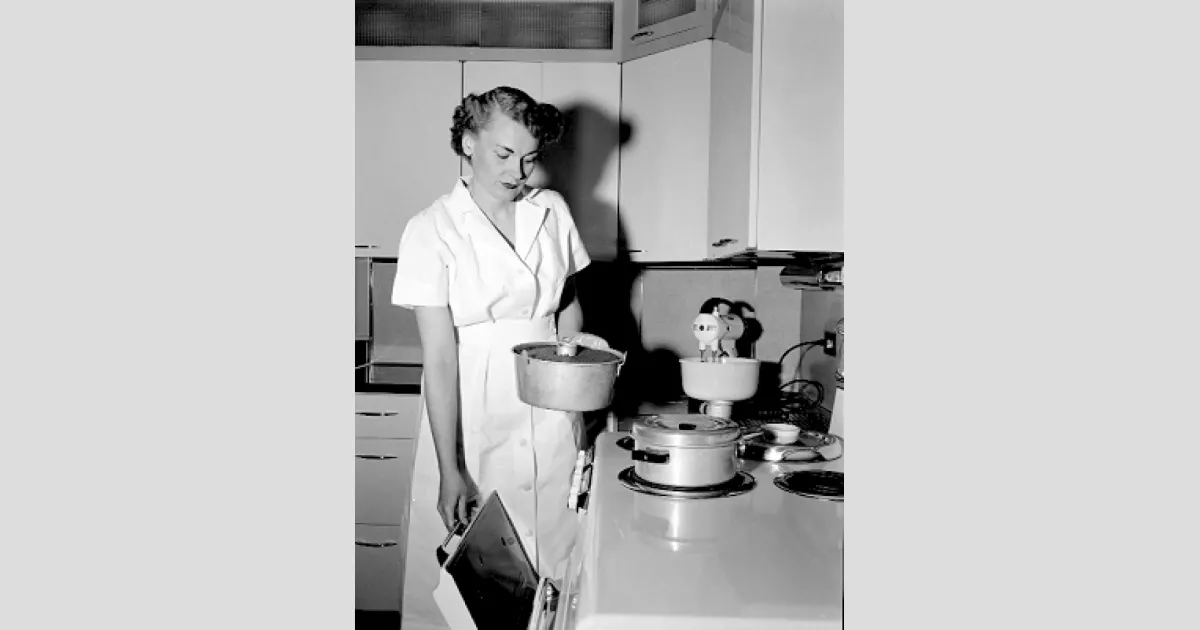Home economics, also known as domestic science or family and consumer sciences, encompasses various subjects including human development, finances, consumer issues, housing, nutrition, and textiles. Traditionally taught in secondary schools, dedicated courses are now less prevalent. The field focuses on equipping individuals with skills for managing their homes and personal lives effectively.
1900: Reifenstein schools gaining prominence
Around 1900, the Reifenstein schools concept, initiated by Ida von Kortzfleisch, gained prominence. These schools provided higher education for women in rural economics.
1900: Bills discussed in Congress dealt with home economics
From 1900, more than thirty bills discussed in Congress dealt with issues of American vocational education and, by association, home economics.
1908: Establishment of the International Federation for Home Economics
In 1908, the International Federation for Home Economics was established to coordinate international cooperation in the field of Home Economics.
1909: American Home Economics Association Founded
In 1909, Ellen Swallow Richards founded the American Home Economics Association (now called the American Association of Family and Consumer Sciences).
1913: Johannes Kramer praises Iowa home economic system
In 1913, Johannes Kramer's doctorate compared different concepts of home economic education worldwide and praised the system of home economics education in Iowa.
1914: Smith-Lever Act Created Federal Funds for Home Economics
In 1914, the Smith-Lever Act created federal funds for "vocational education agriculture, trades and industry, and homemaking" and created the Office of Home Economics.
1917: Smith-Hughes Act Created Federal Funds for Home Economics
In 1917, the Smith-Hughes Act created federal funds for "vocational education agriculture, trades and industry, and homemaking" and created the Office of Home Economics.
1917: Bills discussed in Congress dealt with home economics
Until 1917, more than thirty bills discussed in Congress dealt with issues of American vocational education and, by association, home economics.
1920: First practice baby at Cornell University
In 1920, Cornell University borrowed their first practice baby, called Dicky Domecon when he was three weeks old. The practice baby was borrowed by Cornell, and belonged to the students and to the department.
1923: Gentile reform introduces home economics
Starting from the Gentile reform of 1923, home economics was taught in the lower middle school in Italy.
1929: First College-Level Family Science Department in South Korea
In 1929, the first college-level department of family science was established at Ewha Womans University in Seoul, South Korea.
1941: Death of Thereza Charlotte, Lady Rucker
In 1941, Thereza Charlotte, Lady Rucker, a promoter of household science teaching, died. She had helped establish Domestic Science as a university subject at one university in England.
1945: Ada Gobetti on the housewife's role post WWII
In 1945, Ada Gobetti discussed the challenges facing housewives after World War II, emphasizing the importance of education and organization for women in shaping a new society.
1956: Percentage of female college students
In 1956, 34.5% of college students were female, as opposed to 56.4% in 2016.
1957: Home economics conference in Bogor
In 1957, a conference on home economics was held in Bogor, Indonesia, which laid the foundation for what would become state policy.
1959: Home economics programs with full-time operation decreased
By 1959, less than one percent of the Home economics programs still ran full-time operations nationally.
1963: Vocational Education Act Funds Job Training
In 1963, Congress passed the Vocational Education Act, which granted funds to vocational education job training. Home economics courses started being taught across the nation to both boys and girls by way of the rise of second-wave feminism.
1963: Home economics taught in unified middle school
In 1963, home economics was taught in the new unified middle school, differentiated by gender as Technical Applications.
1964: Civil Rights Act and Desegregation
With desegregation and the Civil Rights Act of 1964, men and women of all backgrounds could equally learn how to sew, cook, and balance a checkbook.
1971: Home economics added to Leaving Certificate
In 1971, home economics was added to the senior cycle Leaving Certificate in secondary school, coinciding with increased school participation due to the elimination of school fees.
1972: Home economics becomes state policy in Indonesia
In 1972, home economics became state policy in Indonesia and was known as Family Training and Welfare (Pembinaan dan Kesejahteraan Keluarga, PKK).
1977: Technical Applications changed to Technical Education
In 1977, Technical Applications (differentiated into male and female) changed to the title of Technical Education, which no longer differed in relation to the sex of the pupils.
1990: End of Reifensteiner Verband operations
In 1990, the Reifensteiner Verband, which had been operating since 1897, ceased its operations. The organization comprised of 15 schools and cooperated with other operators, connecting about 40 rural economist women schools to the Reifensteiner concept.
1994: Family and Consumer Sciences Term Adopted
In 1994, organizations like the American Association of Family and Consumer Sciences adopted the term "Family and Consumer Sciences (FCS)" to better reflect the broader scope of the field beyond home life and wellness.
1994: American Association of Family & Consumer Sciences changes name
In 1994, the American Association of Family & Consumer Sciences officially changed the name of "home economics" to "family and consumer sciences" to more accurately represent the profession and field as a whole.
1994: Home Economics Renamed Family and Consumer Sciences
Starting in 1994, home economics courses in the United States began being referred to as "family and consumer sciences" in order to make the class appear more inclusive.
2011: Swedish School Reform Restructures Home Economics Curriculum
In 2011, the Swedish school reform restructured the home economics curriculum with more focus on health, economy, and environment, including consumer economics and consumer awareness.
2012: Decline in FCS Secondary Program Enrollment
In 2012, there were only 3.5 million students enrolled in FCS secondary programs, marking a 38 percent decrease over a decade.
2014: Finnish National Core Curriculum Emphasizes Home Economics
In 2014, the Finnish National Core Curriculum for Basic Education emphasized the importance of home economics as a key element for achieving sustainable development throughout the curriculum.
2015: Home Economics replaced by Food and Nutrition in the UK
In 2015, the Home Economics GCSE qualification in the UK was replaced with a course entitled Food and Nutrition, focusing more on the nutritional aspects of food than economics.
2016: Female College Students Exceed Male Students
In 2016, 56.4% of college students were female as opposed to 34.5% in 1956, indicating a shift in educational pursuits.
2020: Increase in FCS Program Enrollment
In 2020, the AAFCS estimates that there are 5 million students enrolled in FCS programs, a significant increase from past years that is still growing.
Mentioned in this timeline
Korea is a peninsular region in East Asia comprised of...
South Korea officially the Republic of Korea occupies the southern...
Italy officially the Italian Republic is located in Southern and...

An empire is a political structure consisting of a dominant...
Iowa is a state located in the upper Midwestern region...

War is defined as an armed conflict involving the organized...
Trending

Brit Hume is an American journalist known for his political commentary and long career with ABC News He spent over...

1 hour ago Eric Adams' Mayoral Troubles: Absence from Polls and Political Setbacks in NYC
5 months ago Rick Bozich Retires After 50 Years; Semi-Truck Accident Shuts Down I-65

1 hour ago Kornacki analyzes NJ and VA election trends as Trump looms over governors' races.

3 months ago Trevor Story Approaches Franchise Record as Red Sox Surge in AL East.
Alan Robert Stockdale is an Australian former politician notable for his contributions to the Liberal Party and Victorian state politics...
Popular

Gavin Newsom is an American politician and businessman currently serving...

Chuck Schumer is the senior United States Senator from New...

Candace Owens is an American political commentator and author known...
Turning Point USA TPUSA is an American nonprofit organization founded...

William Franklin Graham III commonly known as Franklin Graham is...

XXXTentacion born Jahseh Dwayne Ricardo Onfroy was a controversial yet...
